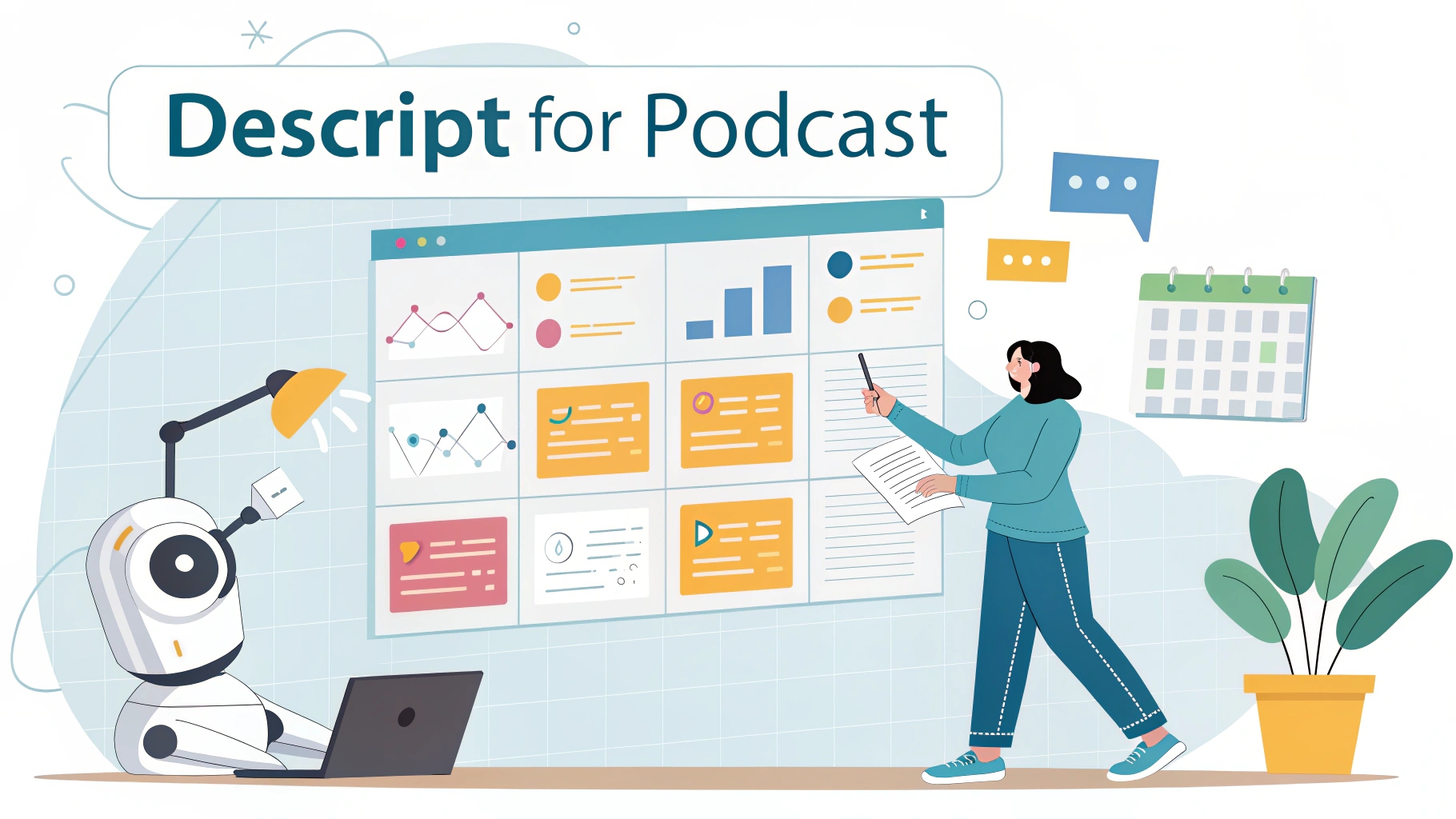
Editing audio and video content traditionally required complex software and technical know-how. But with Descript, creators now edit podcasts and videos as easily as editing a document. Whether you’re a content marketer, YouTuber, or educator, Descript makes audio-visual content creation 10x faster and more accessible.
As highlighted in Top AI tools for streamlining content creation: A comprehensive guide, Descript represents the new generation of AI tools that simplify creative workflows through natural language interfaces and automation.
What is Descript?
Descript is an AI-powered audio and video editing tool that allows users to edit media content via text. Simply upload your file, and Descript transcribes it. From there, you can cut, rearrange, overdub, or add visuals – all by interacting with the transcript, not a timeline.
This makes Descript a natural extension of your content ecosystem – allowing you to transform your interviews, webinars, or podcast episodes (even from tools like Lumen5 or Runway) into clean, shareable media.
Key AI features that make Descript stand out
1. AI-Powered transcription
- Instant and highly accurate speech-to-text that becomes the base for editing.
2. Overdub voice cloning
- Edit or rewrite parts of your narration using a cloned voice – no need to re-record.
3. Filler word & silence removal
- Automatically detects and removes “ums”, “uhs”, and awkward pauses with a click.
4. Multitrack editing & screen recording
- Record, edit, and mix multiple tracks or demos for YouTube and tutorials.
5. Publishing & audiograms
- Export to social formats or embed directly into blog posts like Canva’s AI Magic Studio visuals.
Why Descript belongs in your AI content stack
- Makes editing accessible: Even non-editors can produce professional-quality content.
- Saves time: Eliminate dozens of tedious steps with AI automation.
- Repurpose and refine: Easily reuse content from supporting articles or interviews created during ideation.

You can integrate Descript into the workflow right after scripting with tools like Frase and before polishing visuals in Canva or Runway.
Limitations
- Voice cloning isn’t perfect: Overdub sometimes lacks emotional nuance, especially in longform.
- Limited multilingual support: While transcription supports many languages, AI editing is best in English.
- Cloud-dependent: Offline use is minimal; stable internet is essential.
Best practices when using descript
- Use for post-production: After ideation and recording, plug your content into Descript for fast editing.
- Pair with Canva: Export Descript audio snippets and use them in Canva’s Magic Studio to create audiograms or quote reels.
- Batch create podcast content: Record multiple interviews and edit them in a single workflow session.
Workflow integration
Descript sits at the production and repurposing stage of the AI-powered content pipeline. After scripting with Jasper or Scalenut, and possibly creating visuals with Lumen5, Descript finalizes your audio or video assets.
- Ideal for podcast post-production
- Pairs with Runway for visual storytelling
Descript makes video and audio editing more intuitive, faster, and deeply integrated into the modern content lifecycle. It reduces the technical barrier and allows creators to focus on storytelling instead of timelines. As part of a broader AI toolkit, Descript elevates how you deliver value – through voice, visuals, and video.


